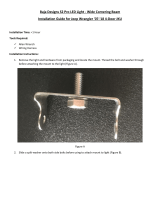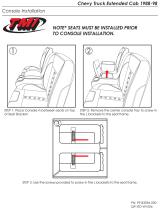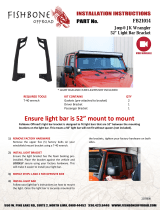
2
©2020 Maxxsonics USA, Inc.
Thanks for choosing MB QUART! The RZR-Tuned Stage 3 Audio System Kit has been meticulously
engineered for your vehicle. The process of installation is simple and straightforward. Installation following
these detailed instructions can be completed in about 3.5 hours.
INSTALLATION OVERVIEW VIDEO
Many of the MB Quart vehicle-specic
products feature a “how to” install video with
additional details on a successful installation
Locate your specic video on the website.
Type your model number (MBQR-STG3-2 or
MBQR-STG3-RC1) into the search box, then
click on the INSTALL & SUPPORT tab.
WHAT’S INCLUDED
The RZR
®
Stage 3 audio system ships in one box with everything you need for your application, either non-
Ride Command
®
vehicles or those equipped with the Ride Command
®
system.
Non-Ride Command
®
Package (MBQR-STG3-2 Only)
● AM/FM/WB, Bluetooth, USB Source Unit with Vehicle-Specic Mounting Panel
● USB and 3.5mm Dash Mount Input Accessory (ts in switch knockout)
Ride Command
®
Package (MBQR-STG3-RC1 Only)
● 2 pcs. RC1-2RCA-F - Ride Command Audio System Interface Adapters
All RZR
®
Stage 5 System Packages (MBQR-STG3-2 or MBQR-STG3-RC1)
● Compact 2-channel, Class D 400 Watt Amplier
● Compact Mono, Class D 400 Watt Subwoofer Amplier
● Dual Amplier Power and Speaker Harness
● Two RCA Audio Patch Cables
● Dual Amplier Vehicle-Specic Mounting Plates with Hardware
● Two Kick Panel-Mounted 8 inch Compression Horn Speakers in Vehicle-Specic Enclosures
● Glove Box Replacement Vented Subwoofer Enclosure w/10” Subwoofer
● Rear Speaker Extension Harness (intended for 4-Door RZR Models - for later upgrade)
● Zip-ties for Securing Audio System Wiring to Vehicle Harnesses
NOTE – Hardware for mounting components and other installation-related items you will need are contained in the
kit. Upgrade this system to a Stage 5 by adding the rear speakers, NHT1-120BPR. The harness included in this kit is
already wired for the upgrades!
Do not dispose of any packaging until you have completely installed your system and certain you have accounted for
every piece. If something is missing, please contact Maxxsonics directly via email –
[email protected].
WARRANTY
Your audio system is covered by a 1-year warranty from the date of the invoice. It is important to retain your
sales receipt. Furthermore, it is crucial that you record and store a record of the serial numbers for each of
the components that are included in your system. In the rare instance that a warranty claim is needed both
proofs of purchase and serial numbers are required. Additional information on the back page.
TECHNICAL SUPPORT
For additional technical information, go to the “SUPPORT” tab at MBQUART.com. There you will nd helpful,
FAQ, TEQ Tips and you can contact Technical Support via email.
INTRODUCTION























